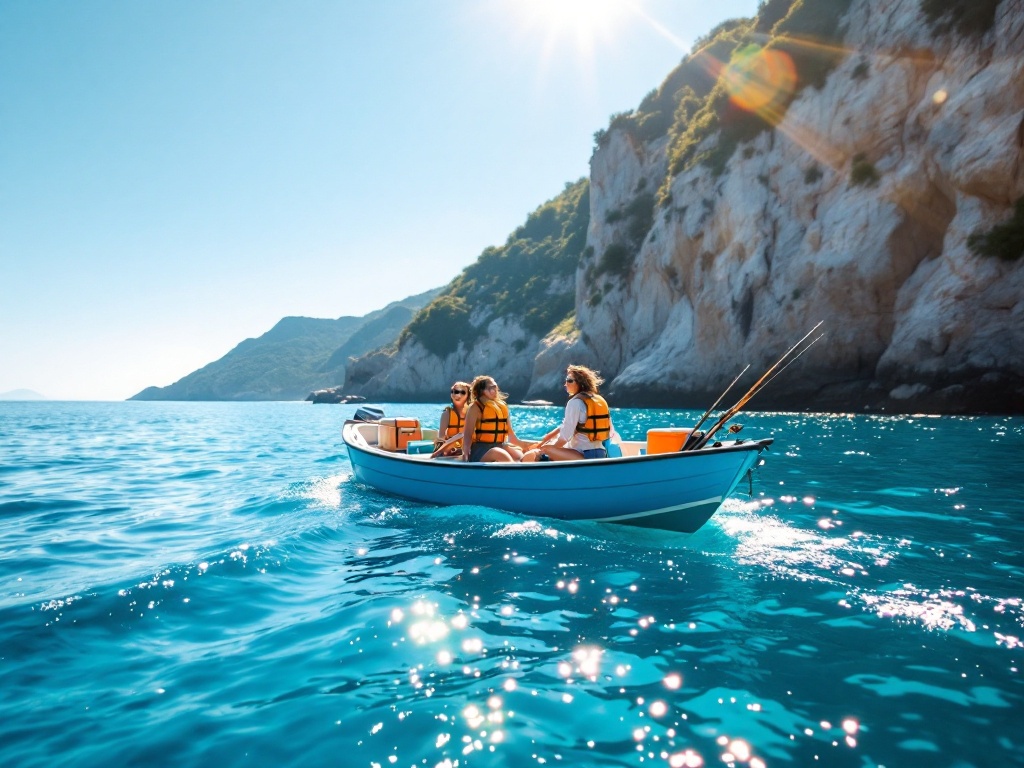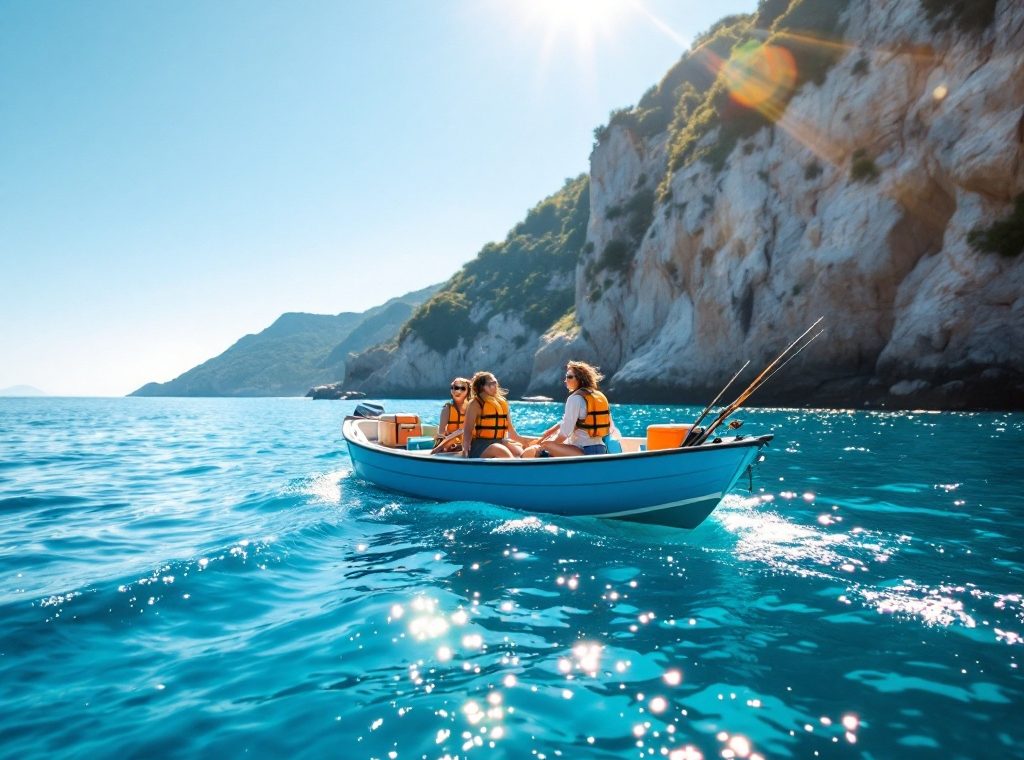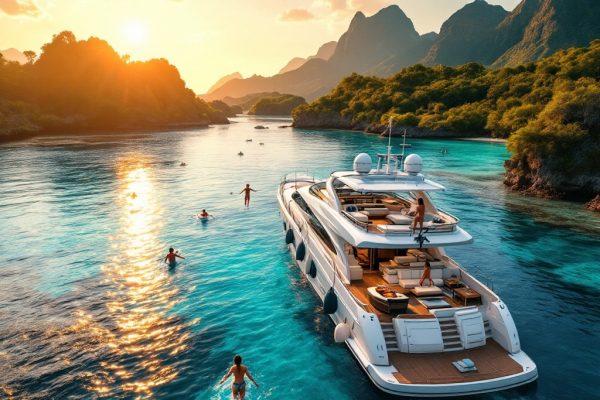How to Plan a Boat Trip in Limited Time
Want a smooth and exciting short boat trip? Careful planning is key! Learn how to maximize your precious time on the water, from choosing the perfect destination within your timeframe to packing essential gear and provisions using handy checklists. Discover the importance of checking weather forecasts, tide charts, and informing someone onshore about your plans for a safe and worry-free adventure. Dive in and start planning your unforgettable boating experience now!
Important information

- Plan your destination and trip length carefully, considering your time constraints.
- Thoroughly check safety gear (life jackets, flares, etc.) and boat systems (engine, hull, bilge pump) before departure.
- Consult weather forecasts and tide charts before and during the trip, and have backup plans for unexpected weather changes.
- Create a detailed itinerary, including route planning, fuel stops, and potential hazards, using navigational charts and cruising guides.
- Pack extra provisions and water for emergencies and potential delays. Consider everyone’s dietary needs.
Understanding the Essentials of Planning a Boat Trip in Limited Time
Planning a successful short boat trip involves several key steps. First, choose your destination and decide on the trip’s duration. Next, determine your essential needs and create a detailed itinerary to maximize your time on the water. Research potential destinations that fit your timeframe. Use checklists for gear, safety equipment, and provisions. Pre-plan meals and pack extra food and water to save time. Lastly, check the weather forecast and tide charts before leaving. Inform someone onshore about your trip plans for added safety.
Choose your destination and decide on the trip’s duration.
Determine your essential needs and create a detailed itinerary.
Research potential destinations that align with your available time and use checklists for gear, safety equipment, and provisions.
Pre-plan meals and pack extra food and water.
Check the weather forecast and tide charts before departure.
Inform someone onshore about your trip plans for added safety.
Importance of Efficient Planning
Planning a boat trip? Maximize your precious time on the water with a good plan. It’s the key to a smoother, safer, and more enjoyable voyage. Thorough preparation helps you avoid delays, manage essential resources like fuel and food, and stay within your budget. Moreover, anticipating potential problems and preparing for unexpected situations ensures a worry-free adventure. Follow these steps to plan your boat trip:
Define your trip’s purpose. Is it fishing, watersports, exploring, or relaxing? Knowing your goal helps shape your itinerary and ensures you pack the right gear.
Choose your destination. Research suitable locations considering factors like water conditions, points of interest, and available facilities.
Check the weather forecast. Up-to-date weather information is crucial for safety and comfort. Be prepared to adjust your plans if necessary.
Inspect your boat. Ensure it’s seaworthy by checking the engine, safety equipment, navigation systems, and communication devices.
Plan your route. Map out your course, identify potential hazards, and note waypoints or landmarks. Share your itinerary with someone ashore.
Benefits of a Well-Organized Itinerary
Planning your itinerary wisely maximizes your time on the water. This ensures efficient travel and stress-free preparation.
Schedule essential boat maintenance and safety checks before departure.
Provisioning is simplified with a clear plan.
A structured approach enhances your boating experience. This allows for better time management at your destination, leaving ample time for activities and exploration.
Choosing the Right Destination
Planning a short boat trip requires careful destination research. Consider your comfortable travel distance and available docking facilities. Evaluate each location for amenities and nearby attractions to maximize your enjoyment.
Prioritize destinations offering scenic views. If fishing or swimming are desired, incorporate these activities into your selection.
Most importantly, choose a location reachable within your limited time frame to prevent exceeding your trip’s duration.
Researching Boating-Friendly Destinations
Plan your unforgettable boating adventure.
Explore potential destinations using navigational charts, cruising guides, and online resources.
Look for locations with convenient mooring or docking facilities.
Consider your interests, such as fishing, watersports, or nature, and choose a destination that matches your preferences.
Review local regulations, as permits may be required and some areas might have restrictions.
Check for available amenities like fuel docks, restaurants, and restrooms.
Careful planning ensures a smooth and successful boating trip.
Creating a Detailed Itinerary
Planning a successful cruise involves several key steps.
Research and Destination Selection
Utilize cruising guides and online resources to discover exciting destinations, identify safe anchorages, and be aware of potential hazards. This research will form the foundation of a fulfilling cruise itinerary.
Thorough Route Planning
Strategic route planning is crucial. Include well-placed fuel stops to ensure a smooth voyage and minimize disruptions. Consider potential challenges and alternative routes for a more enjoyable cruise.
Accurate Fuel Planning
Estimate your boat’s fuel needs based on the distance, boat type, and anticipated speed. Factor in fuel stations along your route while remaining adaptable to potential weather changes or unforeseen circumstances.
Detailed Charting
Plot waypoints on nautical charts, explore alternative routes, and identify backup anchorages. These precautions contribute to a relaxed and enjoyable cruise while providing solutions for unexpected situations.
Using Cruising Guides and Resources
Cruising guides are invaluable resources for boaters, offering essential details on destinations, anchorages, marinas, and local regulations. When combined with real-time data from nautical charts, tide tables, and navigation apps, these tools provide crucial information for safe and efficient voyages. This heightened awareness empowers informed decisions on the water, contributing to a smoother and more secure cruising experience.
Charting Your Journey
Use nautical charts for route planning and factor in necessary fuel stops.
Identify potential hazards and account for weather conditions, adjusting your course as needed.
Prioritize a safe passage above all else.
Calculate travel times, including a buffer for unforeseen delays like bad weather or mechanical problems.
Be prepared to adapt to changing conditions.
Organizing the Crew and Travel Arrangements
Communicate the itinerary clearly, define roles, and establish emergency procedures. This ensures everyone is well-prepared.
Manage travel logistics. Book flights and accommodations, and arrange transport to the marina.
Schedule pre-trip meetings to review the itinerary and safety protocols.
Book flights, rental cars, and ground transportation well in advance, especially during peak season.
Obtain travel insurance to safeguard against unforeseen events like trip cancellations or medical emergencies.
Efficient Crew Organization
A well-organized crew is essential for smooth sailing and a pleasant voyage. Clearly defined roles streamline communication and ensure everyone knows their responsibilities. For example, assigning tasks like navigation, cooking, and anchoring promotes both efficiency and safety. A prepared crew handles unexpected challenges more effectively, responding with confidence and expertise. A clear hierarchy and established procedures contribute to a well-organized crew. This structure ensures that decisions are made efficiently and tasks are carried out promptly. Regular crew meetings or briefings further enhance organization by providing a platform for information sharing, problem-solving, and coordination of activities.
Booking Ahead of Time
Secure your ideal boat by booking in advance, eliminating last-minute stress. This is especially important during peak season and for popular boats. Pre-booking often unlocks better prices, saving you money and giving you ample time to plan exciting itineraries and excursions. This streamlines your trip for a smoother, more enjoyable experience.
Ensuring Boat Maintenance and Safety
Carefully examine your boat’s hull for any cracks or holes.
Inspect the engine for leaks, worn belts, and damaged hoses.
A sound engine is essential for reliable performance.
Check the propeller for any damage or fouling, which can hinder performance.
Test the bilge pump to ensure it’s functioning correctly.
Verify your navigation lights and electrical systems are working properly.
Ensure you have enough life jackets for every passenger onboard.
Check the expiration dates on your flares and fire extinguishers.
Safety should be your top priority.
Test the VHF radio.
Clear communication is vital in emergencies.
Confirm your first-aid kit is fully stocked and ready for any situation.
Inspect your anchor and rode for wear and tear, and make sure you have a throwable flotation device readily available.
Inspecting Boat Maintenance
Before embarking on your voyage, meticulously inspect your vessel. This involves verifying safety equipment such as life jackets, flares, and fire extinguishers, confirming their accessibility and functionality. Additionally, examine your navigation and communication systems. Remember to check fuel levels and replenish if necessary. Subsequently, inspect the hull for any damage indicators and the engine for leaks or unusual noises. Finally, test the bilge pump to ensure proper operation.
Check safety gear: Ensure life jackets, flares, and fire extinguishers are accessible and functional.
Inspect navigation and communication systems.
Check and replenish fuel levels if needed.
Examine the hull for damage.
Inspect the engine for leaks or unusual sounds.
Test the bilge pump for proper operation.
Checking Safety Equipment
Before embarking on your voyage, meticulously inspect your boat’s safety equipment.
Check life jackets for expiration dates and proper functionality.
Inspect flares for expiration dates and ensure they are in working order.
Examine the first-aid kit for expiration dates and ensure it’s adequately stocked.
Verify that your VHF radio is in working order.
Confirm that fire extinguishers are fully charged and accessible.
Ensure other signaling devices are functional.
Remember that a throwable life ring (Type IV PFD) is essential.
Carry visual distress signals (VDS) for both day and night use.
Test the boat’s horn to confirm it’s operational.
Creating a Comprehensive Provisioning List
Planning your meals carefully is crucial for a successful boating trip. Pack additional food and water in case of unforeseen delays or emergencies. Remember to account for any dietary restrictions and preferences of everyone on board when gathering your supplies.
Meal Planning and Packing Extra Food and Water
When preparing for emergencies, pack non-perishable food items such as:
- canned goods,
- dried fruits,
- nuts.
Ensure you have ample drinking water for everyone in your group, factoring in potential delays. Include extra food and water in your emergency kit to account for unexpected circumstances.
Preparing for Weather and Environmental Conditions
Before embarking on your voyage, consult weather forecasts and tide charts.
Planning for unforeseen circumstances is essential; consider alternative routes and destinations.
Pack extra food and water in case of unexpected delays.
Monitoring Weather Forecasts and Tide Charts
Before heading out on the water, check real-time wind information from weather forecasts, including speed, direction, and potential rainfall. Tide charts provide crucial current and water level data, especially important for navigating shallows and inlets. Consult both resources before embarking and regularly throughout your trip.
Contingency Planning for Weather Changes
Storms are inevitable at sea, so always have backup plans for your destination and route. If bad weather hits, seek safe harbor and wait it out. Keep your trip plan updated with the latest forecasts. The safety of your crew and vessel is paramount.
Utilizing Navigation Systems and Tools
Safe boating depends on reliable navigation tools like GPS chartplotters, VHF radios, and compasses. These tools are especially important when time is of the essence. They provide real-time location information and help with route planning. They also enable emergency communication, helping boaters stay on schedule, minimize delays, and maximize their time on the water.
Importance of Reliable Navigation Systems
Reliable navigation systems are essential for boating safety, accurately pinpointing your location for efficient route planning and hazard avoidance. This ensures safer journeys, especially in unfamiliar waters or challenging conditions. A dependable system not only keeps you on course, but also empowers smart decision-making, crucial when time is of the essence. Ultimately, this maximizes your enjoyment while minimizing delays. These systems enhance both safety and efficiency, making them invaluable for any boater.














